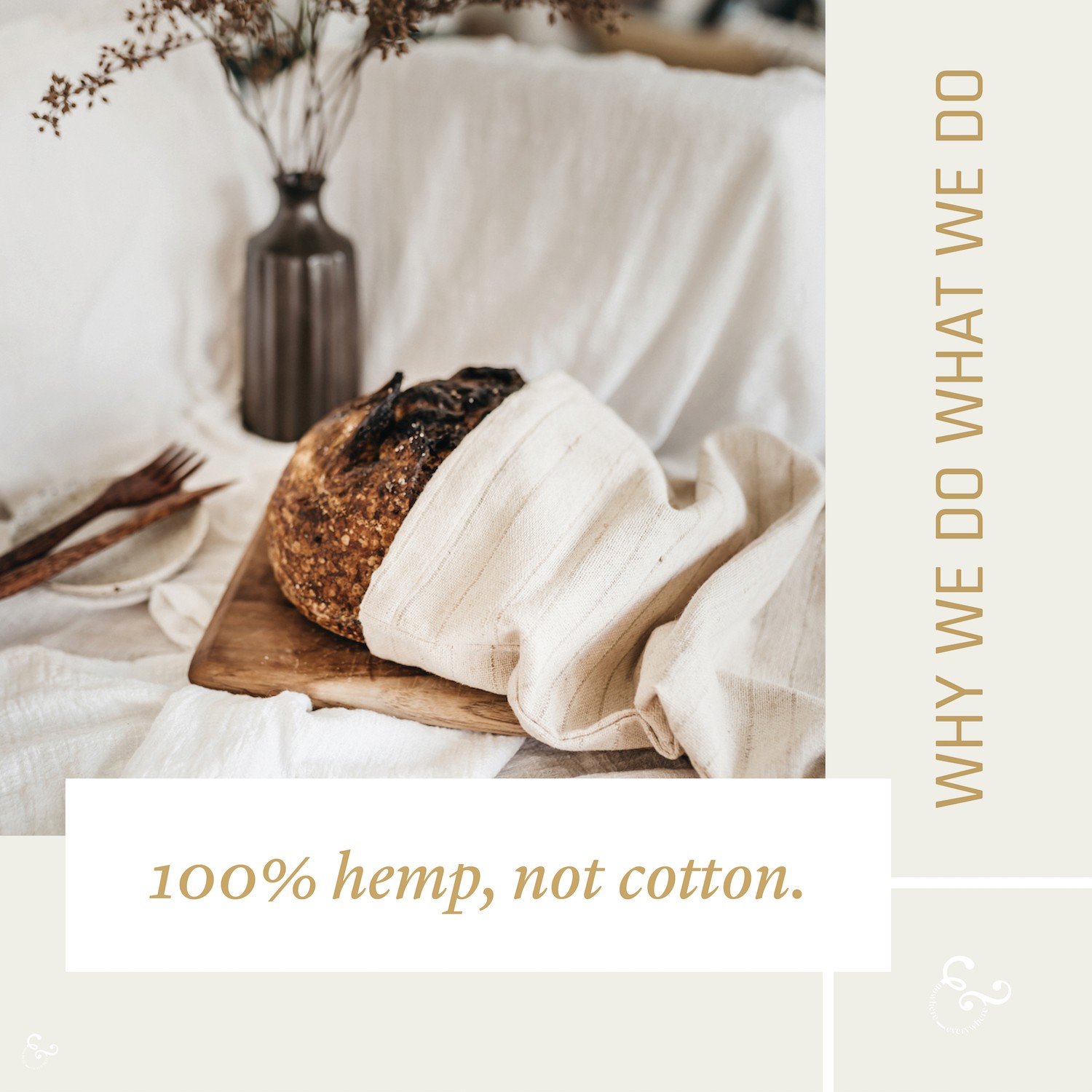Our products support our work here but they also exist for many more reasons beyond us. We want to explore with you why we have made certain decisions, why we run our own centre, and how we do things in the hope that we can all learn together & be more transparent about the choices that come along with a sustainable business and consumption. Far more than sourcing a bunch of stuff from China to sell it!
So to start, why hemp? It took us months to find 100% hemp (not blend) from a sustainable farm that didn’t require huge shipping miles to get to us. We travelled for it. We met lots of people. We did enormous amounts of research. We evaluated and compared. To be frank, it was pretty frustrating.
Hemp can actually be grown and made where we work in Cambodia however it isn’t. There used to a be a hemp factory here but it was purchased (by the Japanese or Taiwanese from what we can ascertain), closed down and never reopened. Hemp stopped growing in the region, the international policies of hemp also gathered a little more traction here as it had in Thailand (confusing it with marijuana in error) and instead, small amounts of jute are grown in a few spots around the country.
We finally found it across the border though (Thailand relaxed their rules on hemp production a couple of years ago; though the local tribes of Hmong people have been growing it for thousands of years) and though they produce only a small range and it is insanely expensive (justifiably so, ethical & sustainable fabrics cost far more than the value we have placed on our unsustainable goods), we decided to run with it as the primary fabric in our products, wherever we could.
Hemp absorbs a lot of C02 whilst it grows, grows faster than cotton, requires less land per comparative yield, uses significantly less water (approx 4x less or more depending on the cotton), softens over time, is incredibly strong, doesn’t require pesticides to grow, returns ~70% of the nutrients back to the soil, is antimicrobial and resists mold. Hemp can be used across a wide variety of methods; we even have hemp straws!
Comparatively, cotton – organic or not – can have a lot of problems and is often grown in regions that are vulnerable to drought and slave labor. It can affect workers with chemicals, is an extremely thirsty crop & supply chain is often not transparent. Where we use cotton, we wanted it to be recycled or recovered, not virgin, as much as possible. We totally understand why people use cotton. It’s not polyester and much cheaper than hemp & flax, and it absolutely can be a good crop in the right areas with the right processes & right labor. It’s just that it is often not and difficult to determine these factors.
We wanted to support hemp, we wanted to know where it comes from, who manages it and whether it was sustainably farmed. Ideally we also didn’t want it flying it’s way across the world just to get to us. That’s the first step marked off on on a never-ending checklist!
You can find more on our materials used here.
We’ll talk about the costs of the hemp and how we manage this later too (we’re not going to get rich from this!).



